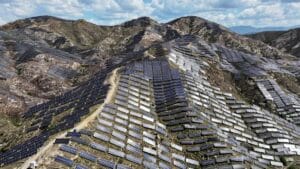The global landscape of research and development (R&D) investment has witnessed a remarkable transformation in recent years. While many might assume the United States or China leads the world in innovation spending, a surprising contender has emerged at the top of the rankings when measured by percentage of GDP. This shift reveals fascinating insights about how different nations prioritize scientific advancement and technological progress in their economic strategies.
Israel emerges as the unexpected R&D champion
In a development that has surprised many international observers, Israel has claimed the top position in global R&D intensity, dedicating an impressive 6.3% of its GDP to research and development activities in 2023. This commitment translates to approximately $28.3 billion in total investment, with the private sector funding an overwhelming 92% of these initiatives.
Israel’s exceptional performance in R&D has yielded tangible results. The country holds the world record for high-tech startups per capita, establishing itself as a powerhouse of innovation despite its relatively small size. This achievement demonstrates how strategic R&D investment can transform a nation’s economic landscape and global competitive position.
Following closely behind Israel is South Korea, which invests 5.0% of its GDP in R&D efforts. Taiwan maintains a strong position with 4.0% of GDP directed toward innovation, despite experiencing a slight deceleration in 2023. These nations showcase how smaller economies can leverage focused R&D strategies to compete effectively on the global stage.
Several European countries also demonstrate substantial commitment to research and development:
- Sweden (3.6% of GDP)
- Belgium (3.3% of GDP)
- Switzerland (3.3% of GDP)
- Austria (3.3% of GDP)
- Germany (3.1% of GDP)
In China, a mountain range disappears under a sea of solar panels – creating the largest photovoltaic landscape ever deployed in the world
At 11 years old, she discovers a giant marine reptile that had been sleeping beneath our feet for 200 million years
Global investment reaches historic heights
The significance of innovation on the world stage has never been more evident. In 2023, global R&D spending reached an unprecedented $2.8 trillion, nearly tripling in constant dollars since the early 2000s. This tremendous growth underscores how nations increasingly view innovation as a critical driver of economic vitality and competitive advantage.
Asia has emerged as the dominant force in research and development, accounting for 46% of global expenditures. North America follows with 29%, while Europe contributes 21% to the worldwide total. Among OECD member countries, R&D intensity averages approximately 2.7% of GDP, with collective spending reaching $1.9 trillion.
| Region | Percentage of Global R&D Spending |
|---|---|
| Asia | 46% |
| North America | 29% |
| Europe | 21% |
| Other Regions | 4% |
This investment surge reflects the growing recognition that innovation offers solutions to pressing global challenges, from energy transitions and medical breakthroughs to digital transformation and climate adaptation. Countries that prioritize R&D position themselves advantageously in these critical domains.
They dumped 200,000 radioactive barrels into the Atlantic: French researchers launch an unprecedented mission to track them down
Goodbye smartphones: Mark Zuckerberg announces the end date — and what will replace them
The giants by absolute numbers
While smaller nations lead in terms of R&D intensity, the economic superpowers maintain their dominance when considering absolute expenditures. The United States remains the world’s largest R&D investor, with spending reaching $823.4 billion in 2023. This substantial commitment places the U.S. fifth in R&D intensity rankings at 3.4% of GDP.
China has demonstrated perhaps the most dramatic trajectory in research investment. Since 2000, Chinese R&D expenditures have multiplied nearly eighteen-fold, reaching $723 billion in 2023—the second-highest globally. China’s share of worldwide R&D spending has expanded from 4% to 26% during this period, with the private sector driving 77.6% of this investment.
The R&D landscape reveals an interesting dichotomy: while Israel and South Korea lead in proportional commitment, the United States and China wield enormous influence through their sheer investment volume. Japan also maintains a significant position with 3.4% of its GDP dedicated to innovation activities.
This diverse geography of innovation highlights how different nations approach R&D according to their unique economic structures and strategic priorities. As countries compete for leadership in critical sectors like semiconductors, artificial intelligence, biotechnology, and renewable energy, research and development investments will continue to shape global economic dynamics and technological progress.







